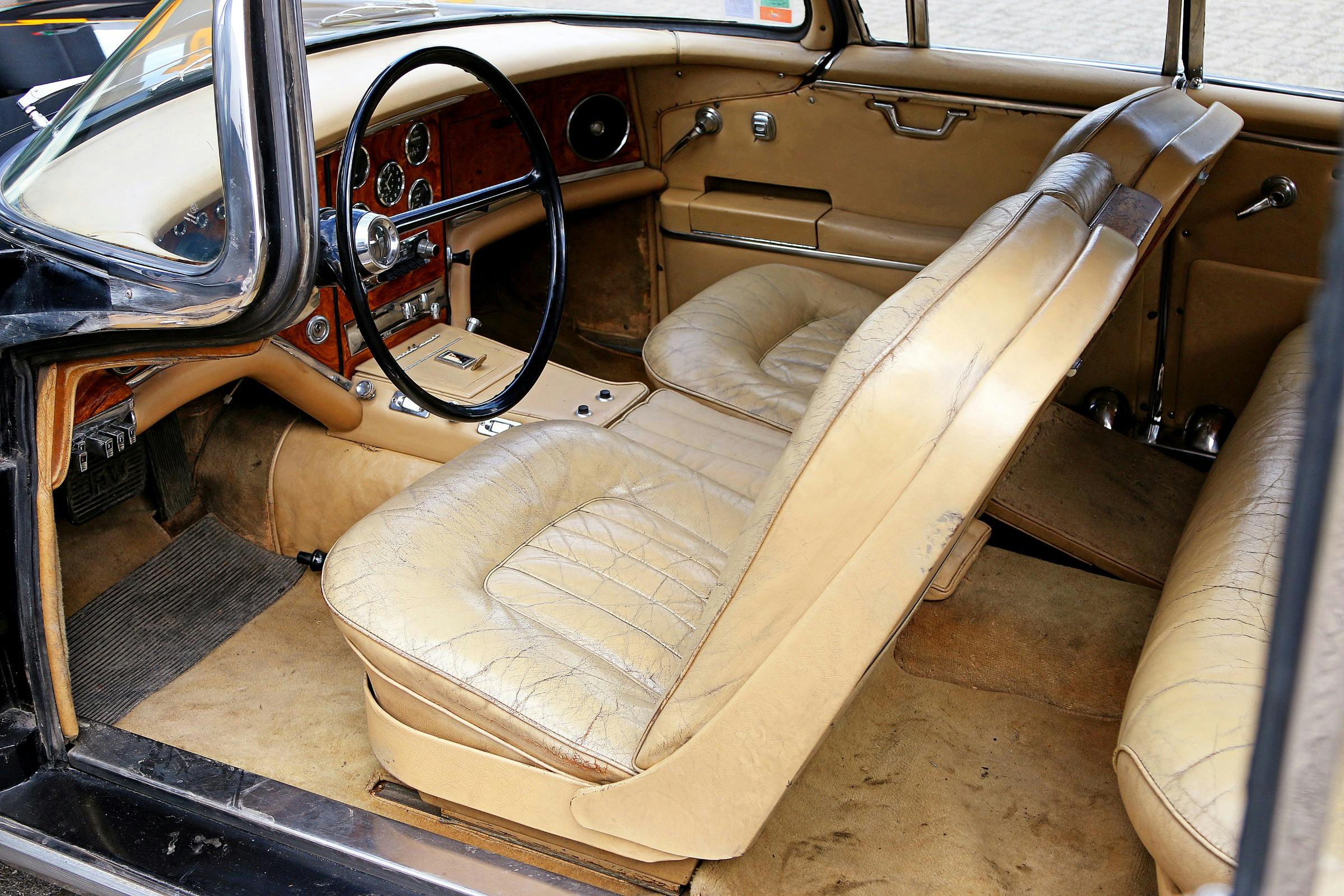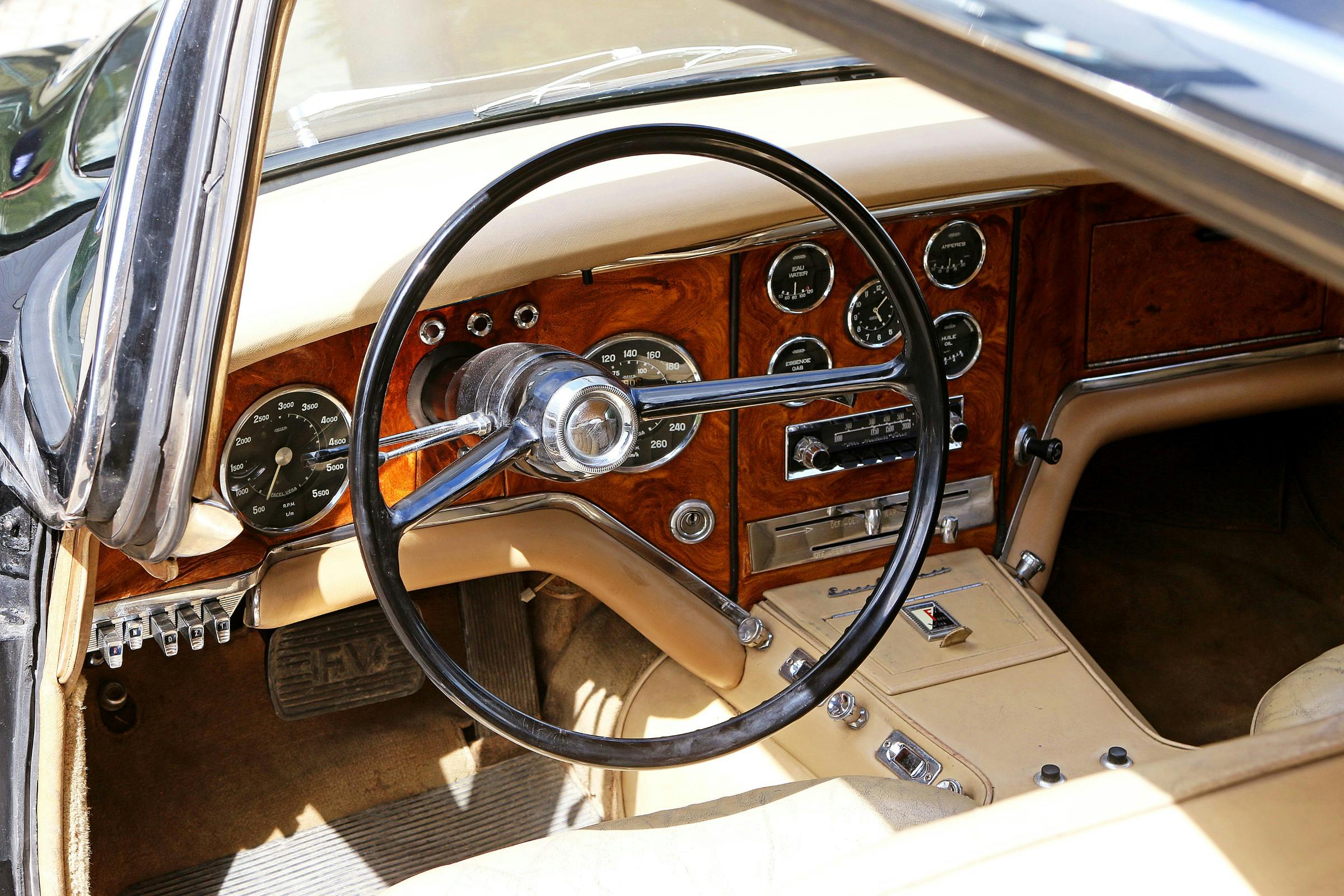The coolest cats of the ’50s drove this extinct Chrysler-powered car

Between 1954 and 1964, France’s Facel Vega produced hugely expensive and exclusive hand-made grand tourers that were usually powered by Chrysler V-8s. The man behind the company was Jean Daninos, who in 1939 founded Forges et Ateliers de Construction d’Eure et de Loir (FACEL), to produce machine tools for the aircraft industry.
Daninos began his career in the 1930s, working alongside André Citroën, whom he helped to design and engineer the Traction Avant. Throughout the Second World War, Facel thrived. Once the hostilities were over, Daninos built a special body on a Bentley Mk VI chassis for himself. Then, he built another half a dozen for his friends. It was this activity that attracted the attention of marques such as Simca and Ford, who awarded Daninos contracts to build the body shells for their low-volume coupes.
More importantly, Panhard also signed a deal with Daninos for Facel to build bodies for its Dyna four-door. This contract alone was big enough to account for 70 percent of Facel’s production capacity, but when Panhard took the work in-house in 1953, Facel suddenly had a lot of production capacity and no use for it.
Daninos had a weakness for stylish luxury cars. Apart from Talbot Lago, a company which would be dead by 1959, there were no other luxury car makers in France. (Delage and Delahaye had already gone to the wall.) Daninos knew that this was his chance to become a luxury car maker, so in 1953 he created Facel Vega. Its goal was to build expensive and exclusive cars for the ultra-wealthy. Among the company’s clients were the Shah of Iran and King Hassan II of Morocco, Ava Gardner, Ringo Starr, Pablo Picasso, Christian Dior, Frank Sinatra, and Stirling Moss.

By 1954 Facel Vega was ready to unveil its first production car, a V-8-powered, four-seat coupe called the FV, which featured a De Soto Firedome 4.5-liter V-8 engine and was underpinned by a bespoke tubular and channel-section steel chassis. The power was taken to the rear wheels via a Chrysler Torqueflite push-button three-speed automatic transmission, or a Pont-à-Mousson four-speed manual. The suspension was conventional, by double wishbones and coil springs up front, with a live Salisbury axle at the back, located by leaf springs. There was cam-and-roller steering, the brakes were drums all round, and bolt-on wire wheels were standard.
Styled by Facel’s in-house designer Jacques Brasseur, the FVS was nothing short of sensational. Glamorous and opulent, it could top 135 mph while keeping its occupants in luxury equal to that of any Rolls-Royce or Cadillac. There was brightwork galore, but it wasn’t gaudy. More impressively, virtually all of it was stainless steel rather than chrome-plated steel—everything was built to last.
The FV would be developed into the FVS and then the HK500. The latter would become Facel Vega’s most popular model, but in the meantime Daninos wanted to build something even more ostentatious. To that end, he stretched the FV’s chassis by 20 inches, lengthening the new four-door sedan by a whole 25 inches. At 15 feet long, the FV was not a small car to begin with, either.
Unveiled at the 1956 Paris Salon, the Excellence was unlike anything seen before or since. Its pillarless construction and rear-hinged back doors were bonkers. Unfortunately, they led to no end of engineering problems, as the doors had a tendency to fly open when the car rounded a corner. Facel Vega’s solution, when it returned to the 1957 Paris Salon with the same prototype, was a 5.8-liter Chrysler Hemi V-8.

It wasn’t until spring 1958 that the first 10 Excellences were ready for delivery, each with a 6.3-liter Chrysler V-8 in its nose. Over the next three years, the company produced another 134 cars. But in 1962 Facel Vega went into receivership, although it would limp on for another two years, producing cars at a trickle. Among them were another eight Excellences, taking the total production run up to 152.
When Jean Daninos had started to create Facel Vega, he assumed that France would take very few of his cars because of punitive tax laws. In the end, almost a third of the Excellences made (48) were sold in the home market. North America took 63 and the UK 13, with most of the others going to various Arab states and an array of Western European countries. The number of survivors is now unknown, but three are in the Isle of Man Motor Museum, so if you’re now desperate to see one of these astonishing vehicles, you know where to go.
***
Check out the Hagerty Media homepage so you don’t miss a single story, or better yet, bookmark it. To get our best stories delivered right to your inbox, subscribe to our newsletters.




Although I liked all the Big Three cars. The 57 Corvette “Fuelie” was the most popular and interesting Car & engine of the time!
My uncle owned a Facel Vega in 1968 with a Chrysler hemi and push button trans.
My job was to clean and polish the wire wheels one spoke at a time.
I also washed it often, it was black with a red interior and the black paint was the most beautiful paint job that I had ever seen.
He stored it in my mothers garage and when my mother wasn’t home I would take it out on Woodward.
Wasn’t fast enough to compete with the pony cars but it surprised a lot of the them.
My uncle wasn’t a car guy, I don’t know why he bought the Facel, it eventually went into disrepair and he sold it.
Always wondered what happened to it.
Here’s one for sale: https://hymanltd.com/vehicles/6982-1958-facel-vega-excellence-sedan/
I’ve had a number of cars I truly loved but the one I wish I still had as a 1957 HK 500 with (IIRC) a 392 Hemi and a three speed push button auto that I assumed was a Torque Flite. About the only thing mechanical that wasn’t Chrysler was the power steering and of course it failed and that led to an accident that damaged the front end. At that point in time I couldn’t find anyone who would adapt another system (and that was in 1967 in southern California). Before my poor driving as a 21 year old just back from Nam that car was amazingly fast, stable at speed and while not a true road track race car still handled well. When I bought it I traded in a 52 XK120, the salesman was an old family friend who told me the Facel was originally owned by Sinatra. I suppose everyone has a car they long for again and wonder why in the hell they sold it.
Face Vega also made a small luxury sports convertible
Called the Facellia , with a 1.6 liter DOHC engine.
Later with Volvo engines
Gene
with in house built 1.6 liter. DOHC engine!